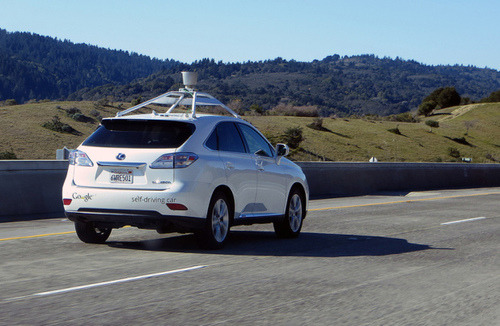Maybe you’ve seen all those articles about driverless cars under development by Google,Carnegie Mellon and a slew of other smarty-pants organizations. When I talk to people at the office about what driverless cars mean, I hear about not wanting to give up control or worries about making the car into a complicated piece of consumer technology.
I imagine the technology will adjust to these concerns (or it won’t take off in the first place), but what bigger changes might be on the way? I’ve spoken with a number of experts about what’s in store for driverless cars and would like to share three core concepts about driverless cars, driving habits and climate protection:
1. Cars may spend more time driving
One of my favorite facts is that cars spend 95% of the time parked. What a waste! But with driverless cars people could send their cars back on the road instead of parking. Imagine someone working downtown and sending their car back home instead of paying to park in a garage. What an even bigger waste! Clearly driverless cars, and the behavior they encourage, could mean cars spend more of the time on the road than ever before.
2. Driving may be safer (and cleaner)
The news isn’t all bad. Driverless cars may also be much safer. Human error is responsible for 90% of road accidents, so it seems like there’s room for smart technology to do a better job. If driving becomes much safer, over time car designs could also become much ligher — resulting in better efficiency.
Interestingly, we could also see a reduction in traffic jams. There are cars on the road today with Autonomous Emergency Braking (AEB) that use sensing technology to prime your brakes or even engage them before a collision. Even a small number of cars with this technology can speed up bumper to bumper traffic.
3. Transportation becomes a service
Think about having a contract with a car leasing company, who gives you access to a new car ever few years for a monthly fee (just like mobile phones). It’s not so different from what we do now, but it’s a clear break from the idea that we primarily own cars.
Now imagine paying a monthly fee for access to a fleet of driverless cars (like Zipcar or City Carshare), but the vehicles actually come to you rather than you having to find them in a nearby lot. Another example would be the Lyft model, but without needing a driver to take you where you want to go. The company might even have an app like Carma running automatically in the car to help drive down the cost of each trip and increase efficiency. How cool!
– Brant Arthur
